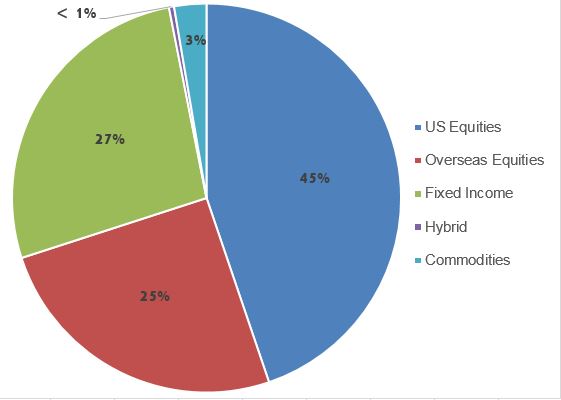Investors are familiar with the traditional stock and bond and alternative asset classes, typically choosing to buy individual securities. But what are exchange traded funds, and how do they provide exposure to these three asset classes? Why are they growing quickly, and how should they be utilized?
Exchange traded funds are low cost, pooled investment vehicles to enable diversified investment in a variety of stocks or bonds or alternatives. Most ETFs simply track an index, i.e., the S&P 500, the Barclays Aggregate bond index, the NASDAQ 100, gold, etc. to enable asset allocation among the major asset classes. ETFs are highly liquid; each can be bought and sold throughout a regular trading day.
From the original ETF created in the early 1990’s, there are now over 2,000 ETFs with combined assets of $2.8 trillion.* In fact, the dollars invested in ETFs has doubled over the last four years** and U.S. based ETF assets have grown by 30 percent while mutual funds grew just 3.5 percent in the last year.***
Why were ETFs created, and why are investors choosing to utilize them so widely? It was primarily growing dissatisfaction with high fees in the traditional mutual fund market that has driven more investors, individual and professional alike, to consider adding ETFs to their portfolios. Unlike mutual funds, ETFs have no upfront load charges, and their annual fees tend to be lower than many mutual funds.
In terms of new money added, the following chart indicates how ETF fund flows were invested during 2016:
Source: Investment Company Institute
ETFs can be used not only to replicate an index, but can also be used in actively managing portfolios depending on the investor’s preference for a particular slice of the market at any point in time.
Investors can choose a stock sector fund, i.e., materials, which will go out and purchase a pool of stocks in the materials sectors. The diversification allows for materials sector-type returns without single security volatility and risk. There’s an ETF for the stock markets of most countries around the world, and there are those which represent a region, i.e., Latin America.
Within fixed income, investors could choose Treasury inflation-protected bonds, emerging market bonds or a slice of less-than-investment-grade U.S. bonds via an ETF which could reduce risk within an otherwise volatile sector of the bond market (again without incurring single security risk).
The essential thing to remember about trading in ETFs is that it is imperative to understand what positions are held in each ETF in order to meet investing goals. While most ETFs incorporate over a dozen holdings, some include nearly 1,000. An ETF could contain a single security which accounts for a very significant portion. Some are routinely rebalanced to match a formula, i.e. the lowest volatility stocks in the S&P over the last 12 months, so reviewing those holdings from time to time is important.
With the proliferation of ETFs, there are more selections available for use within portfolios. At Nevada Retirement Planners, we believe ETFs offer an opportunity to cost effectively manage investments to meet our clients’ needs for protection of principal, income or growth across our Laddered Income, Absolute Yield, Endowment Series, Precious Metals and other strategies on an active basis.
Please contact us at 775-674-2222 to discuss how exchange traded funds may be applicable to your long term financial goals and objectives.
Sources: * XTF Research
** Barron’s 3/11/17
*** Investment Company Institute 2/27/17

